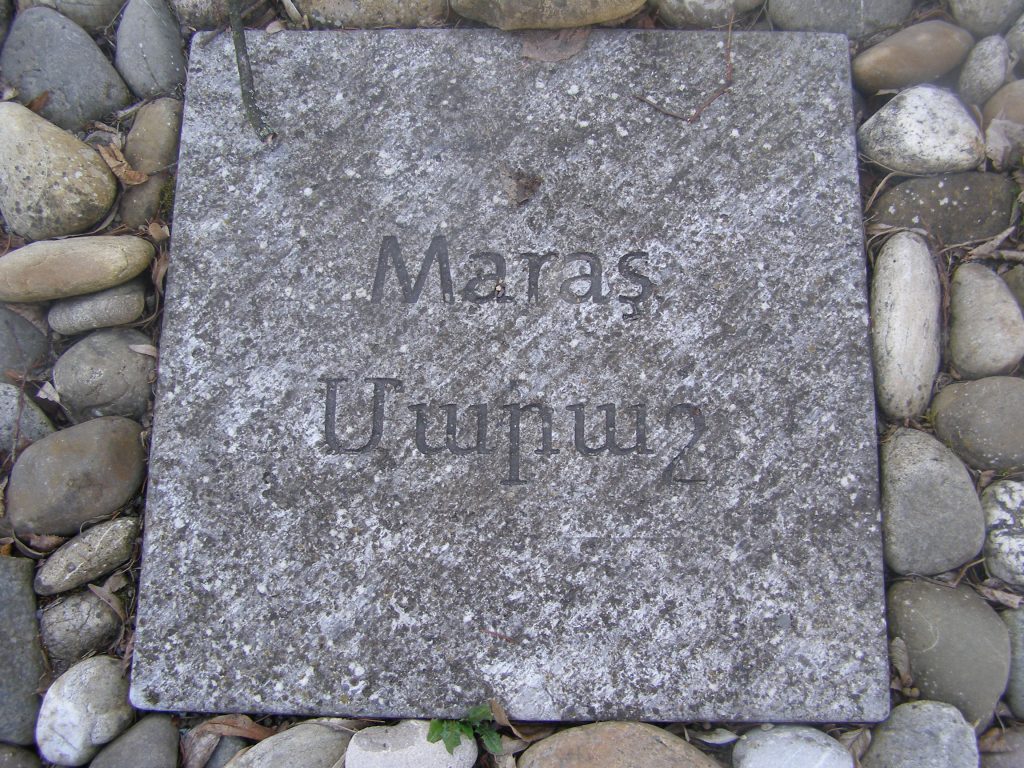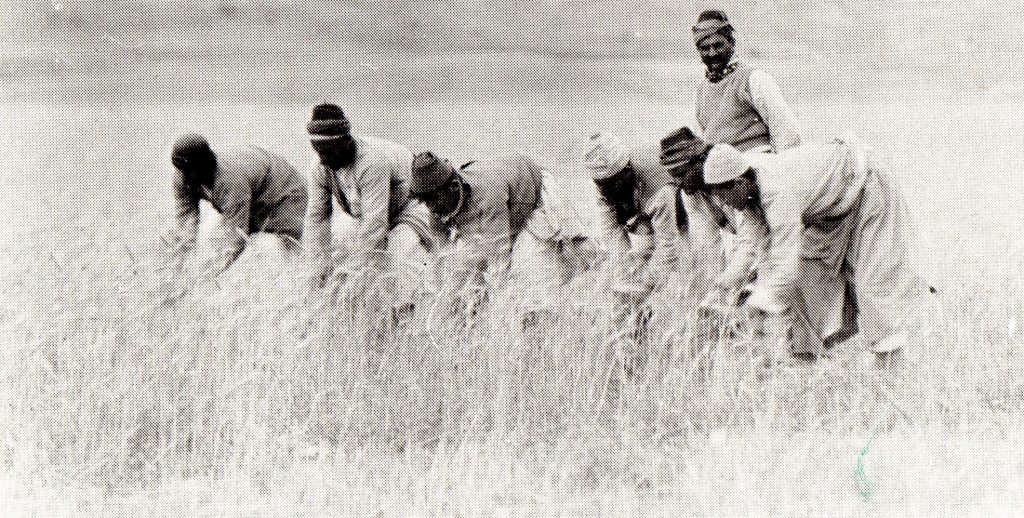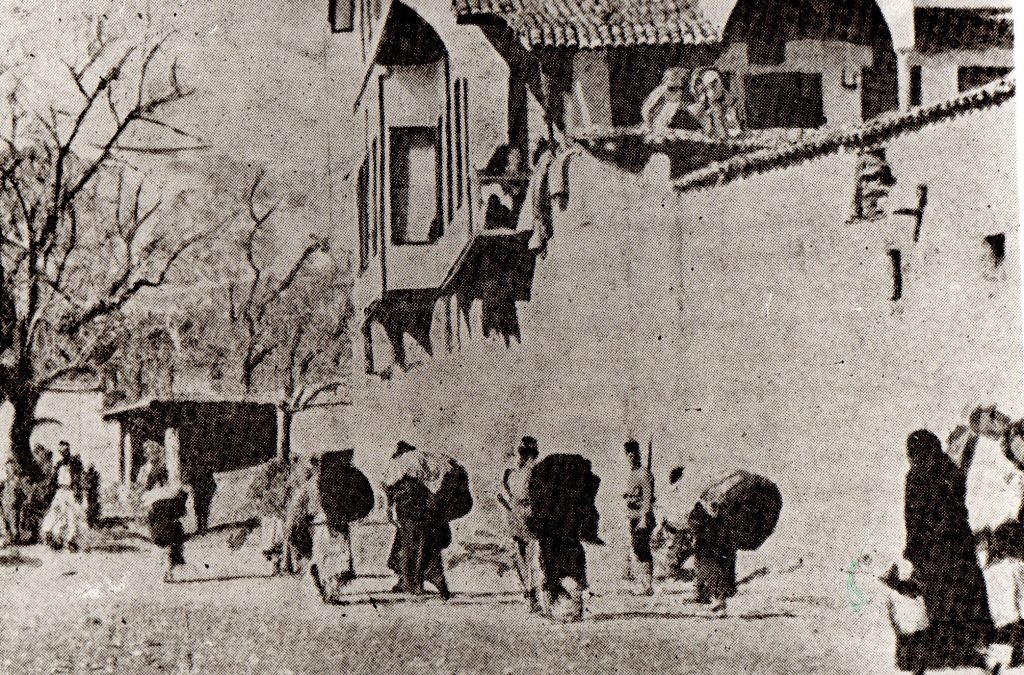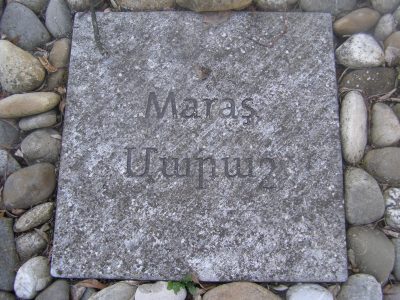
Administration
The Ottoman sancak Maraş was previously known as sancak of Albistan (Elbistan). It comprised the five kazas of Marash (Maraş), Zeytun, Elbistan, Göksun, and Pazarcık. Early in March 1915, the region of Maraş had been elevated to the rank of a mutesarifat.
| Maraş was part of the zone of French influence according to the Treaty of Sèvres (1920), but after the success of Turkish War of Independence, Maraş, Antep and Urfa (sancaks of the former Aleppo Eyalet, 1549-1865 and the Aleppo Vilayet, 1865-1918) were taken back by Turkey. |
Population
In 1914, the sancak Maraş had a population of 187,899.[1]
Armenian Population
“A region forming a kind of pivot between the worlds of Cilicia, Cappadocia, and the Armenian plateau, in an enclave between the Antitaurus and the Taurus, the Mutessarifat of Maraş/Marash was inhabited in 1914 by more than 70,000 Armenians living in 64 towns and villages. When the last two kazas [of Maraş and Bazarcık/Pazarcık] began to be emptied of their Armenians, there were fewer than 35,000 of them left in 24 localities. Most of them were living in the city of Marash, whose 22,500 Armenians represented in 1914 around 50 per cent of its population. Almost all of them were concentrated in a neighborhood west of the citadel that extended to an area below the monastery of Saint James, on the outskirts of the city. Within this perimeter were no fewer than five churches, several Armenian schools, an American College, and a German hospital and orphanage. The other Armenian localities of the region were Fındıkcak, located 22 kilometers from Marash, with an Armenian population of 2,500; KişifIi (pop. 560), Dereköy (pop. 1,000), Camustul (pop. 250), and Döngel (pop. 1,500). There was a second group of Armenian villages around Yenicekale (pop. 800) and Mucukdere (pop. 500), between which lay the Red Monastery of Kesun: Arablı (pop. 100), Kötekli (pop. 150), Yeğialar (pop. 150), Çurukköz (pop. 300), Demerek, Punarbaşı (pop. 100), and Dikilitaş (pop. 100). Still further to the southwest, on the boundary-line of the kaza around Enderun (70 Armenians) were three other villages: Acemli (pop. 84), Dırtadlı (pop. 280), and Deyirmendere (pop. 140). The last Armenian village, Chivilgi, lying in a northerly extension of the Enderun mountain chain, had an Armenian population of 1,760. (…) Taking in the entire southern part of the mutessarifat of Marash, the kaza of Bazarcık [Pazarcık] was home to 1,500 Armenians, all of whom lived in the seat of the kaza, also called Bazarcık.”[2]

Destruction
“Several witnesses have pointed out that the Armenian localities of the kazas of Zeitun, Göksun, and Elbistan were immediately occupied by Muslim muhacirs [immigrants, refugees] from Macedonia and Rumelia. [Missionary Kate] Ainslie observed as she left Marash on 14 June [1915] that Zeitun was now inhabited by Macedonians, who chopped down the fruit trees for firewood. Referend John Merril, from Marash, had noted that the muhacirs who took the place of the Armenians in Furnuz and Geben had been temporarily left in Ayntab [Antep] while waiting for the Armenian houses to be emptied of their occupants. He states that, ‘From confidential sources in Marash, the secret report is made that the intention to deport he Christian population of all the Marash villages, extending as far north as Hasan Beyli.’”[3]

